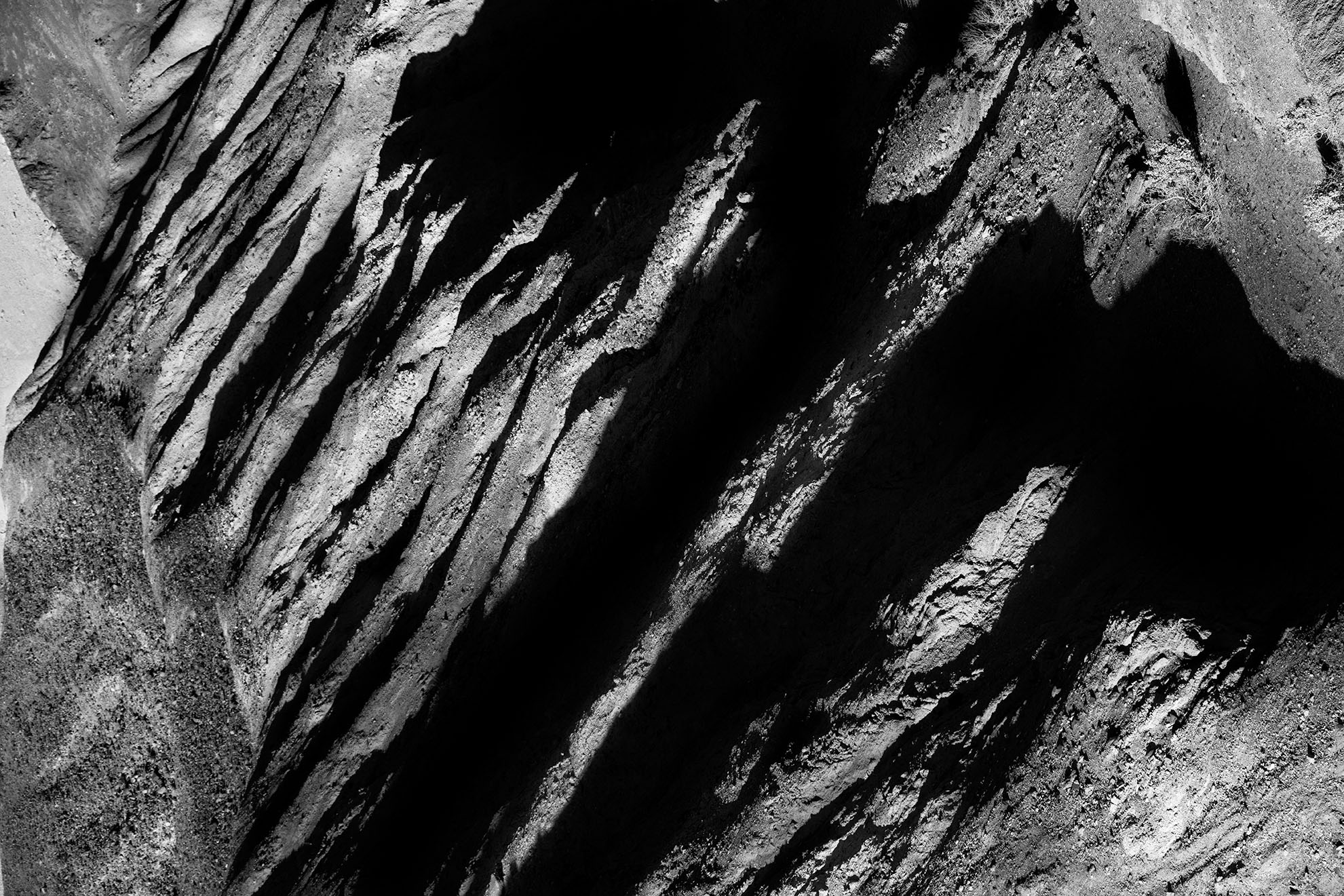American photographer Aaron Siskind (1903-1991) used his camera to create essentially abstract expressionist imagery. In Siskind’s photography, the abstract composition of shapes integrated through effective uses of positive and negative shapes are the point of the imagery, rather than a rendering of the subject matter. For example, in one of my favorite Siskind images, Martha’s Vineyard 108, a silhouetted stack of rocks over an inner space can be visually read as either a shape in black (actually the rocks), or a shape in white (the sky and passage through the rocks).

When I saw my Shadow on a Hill (shown above) in the filmstrip mode of Adobe Bridge, I recognized that the camera is looking down a vast hillside (to get a sense of the scale, check out the shrub on the upper right in the sunshine). The entire image seemed a piece of abstract expressionism, more about formalism and positive versus negative space than about a specific subject.
Laurence Goldman
5 Jan 2021Abstract expressionism was an art movement signifying a break from European Moderism. You show ONE IMAGE as an example! Who were the photographers working at that time in this aesthetic? What was going on in photography when Klein, Pollack, de Kooning, Lee Krasner, Anne Ryan, Hans Hoffman, Helen Frankenthaler, Joan Mitchell were painting? I consider Lee Friedlander to come out of this aesthetic. The images don’t have to be “abstract”. There was a vortex of creativity coming out of the Cedar Bar, as well as Black Mountain College that was practically the birthplace of American Art. Who were the photographers?